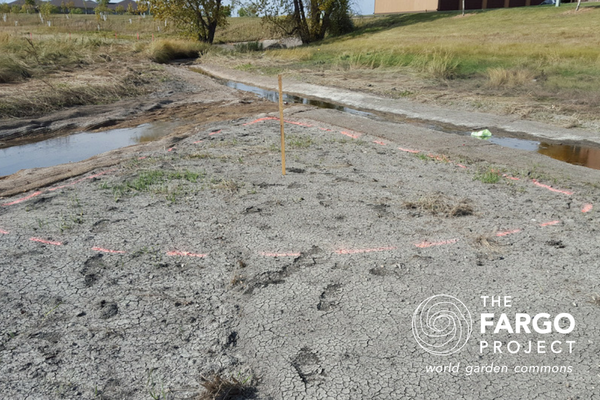 Fresh, home-made chocolate pudding, warm, just off the stove is a favorite treat during cold winter evenings. After it comes off the stove, the pudding is in a semi-liquid state that requires you pour it into a bowl to eat or let it cool and solidify in the refrigerator.
Fresh, home-made chocolate pudding, warm, just off the stove is a favorite treat during cold winter evenings. After it comes off the stove, the pudding is in a semi-liquid state that requires you pour it into a bowl to eat or let it cool and solidify in the refrigerator.

Silt, clay and water make for a muddy basin
While our top soil is some of the most fertile soil in the nation, the layers under the surface comprise largely of heavy, poorly drained clays and silts left over from glacial Lake Agassiz. In some areas, what remains of the glacial-drift ranges from 150 to 300 feet thick. The particles of clay and silt are so small you can’t see a single granule. When wet, the soil acts like pudding. When it dries, what remains are layers of fine dust.

Even when it appears to be dry, under thin layers of dust the silt and clay soil remains mushy and soft.
We learned last year during the regular summer construction season that the soil at the bottom of the basin acts like hot pudding. As a stormwater basin it’s supposed to hold water during and after rainstorms. Even during the driest time of summer, the soil under layers of dust is often infused with water. The wet soil makes it difficult for heavy equipment to move and the soil’s lack of structure causes any piles to shift and puddle. While you can try to pile big ol’ spoonfuls of pudding on your plate, there’s a reason pudding is sold in a cup.
Once the soil freezes heavy work can begin on three water features at the inlets and outlet. The new structures will mimic nature and include a plunge pool which, in theory, will collect sediment as stormwater collects. Rocks of various sizes will mimic streams and cause low-flow water to babble. The design is much more visually appealing than the concrete aprons that exist today.
Keep an eye on this winter’s construction.